Modeling in Science
Modeling in science is the process of creating and using models to represent phenomena, structures, and systems in the natural world. Models can be physical, conceptual, mathematical, or computer simulations, and they help scientists and students understand and analyze complex scientific concepts.
Types of Models
There are different types of models used in science:
- Physical Models: These are three-dimensional representations of an object or system, such as a model of the solar system or a human heart.
- Conceptual Models: These models are verbal or graphical explanations of how a system works, like a diagram showing the water cycle.
- Mathematical Models: These are equations and formulas that represent relationships between variables, like the equations used to describe the motion of objects.
- Computer Simulations: These are digital models that simulate real-world processes, such as climate models or protein folding simulations.
Uses of Models
Models serve several purposes in science:
- They help scientists visualize and understand complex systems and phenomena.
- They allow scientists to make predictions and test hypotheses about real-world events.
- They aid in communication and education, helping students and the public grasp scientific concepts.
- They can be used to simulate and predict the outcome of experiments that may be difficult or impossible to conduct in real life.
Studying Modeling in Science
When studying modeling in science, students should:
- Understand the different types of models and their characteristics.
- Learn how to create and use models to represent scientific phenomena.
- Practice interpreting and analyzing data obtained from models.
- Explore how models are used in different scientific fields, such as physics, biology, and environmental science.
- Engage in hands-on activities to build physical models and use computer simulations.
Overall, modeling is a fundamental aspect of scientific inquiry, allowing scientists and students to explore, understand, and explain the natural world.
[Modeling] Related Worksheets and Study Guides:
.◂Science Worksheets and Study Guides Kindergarten. Our Earth
Coloring Worksheet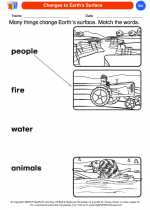 Changes to Earth's Surface
Changes to Earth's Surface  Coloring Worksheet
Coloring Worksheet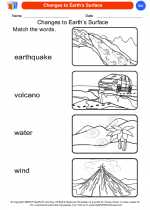 Changes to Earth's Surface
Changes to Earth's Surface  Coloring Worksheet
Coloring Worksheet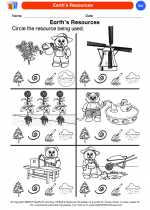 Earth's Resources
Earth's Resources  Coloring Worksheet
Coloring Worksheet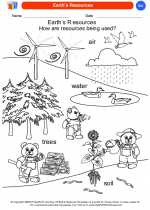 Earth's Resources
Earth's Resources  Coloring Worksheet
Coloring Worksheet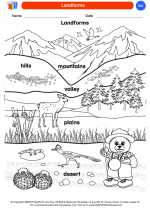 Landforms
Landforms  Coloring Worksheet
Coloring Worksheet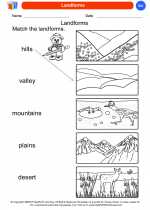 Landforms
Landforms  Coloring Worksheet
Coloring Worksheet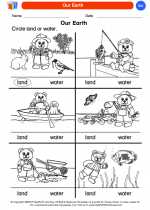 Our Earth
Our Earth  Coloring Worksheet
Coloring Worksheet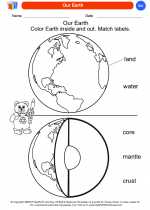 Our Earth
Our Earth  Coloring Worksheet
Coloring Worksheet Reduce-Reuse-Recycle
Reduce-Reuse-Recycle  Coloring Worksheet
Coloring Worksheet Reduce-Reuse-Recycle
Reduce-Reuse-Recycle  Coloring Worksheet
Coloring Worksheet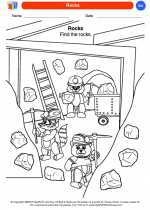 Rocks
Rocks  Coloring Worksheet
Coloring Worksheet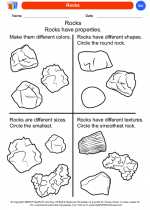 Rocks
Rocks  Coloring Worksheet
Coloring Worksheet Soil Beneath Our Feet
Soil Beneath Our Feet  Coloring Worksheet
Coloring Worksheet Soil Beneath Our Feet
Soil Beneath Our Feet  Coloring Worksheet
Coloring Worksheet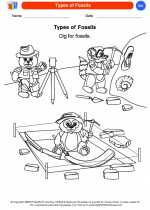 Types of Fossils
Types of Fossils  Coloring Worksheet
Coloring Worksheet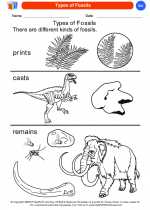 Types of Fossils
Types of Fossils  Coloring Worksheet
Coloring Worksheet Uses of Rocks & Minerals
Uses of Rocks & Minerals  Coloring Worksheet
Coloring Worksheet Uses of Rocks & Minerals
Uses of Rocks & Minerals  Coloring Worksheet
Coloring Worksheet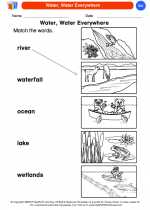 Water, Water Everywhere
Water, Water Everywhere  Coloring Worksheet
Coloring Worksheet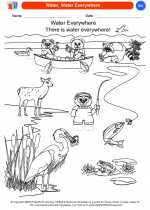 Water, Water Everywhere
Water, Water Everywhere 

 Coloring Worksheet
Coloring Worksheet
 Coloring Worksheet
Coloring Worksheet
 Coloring Worksheet
Coloring Worksheet
 Coloring Worksheet
Coloring Worksheet
 Coloring Worksheet
Coloring Worksheet
 Coloring Worksheet
Coloring Worksheet
 Coloring Worksheet
Coloring Worksheet
 Coloring Worksheet
Coloring Worksheet
 Coloring Worksheet
Coloring Worksheet
 Coloring Worksheet
Coloring Worksheet
 Coloring Worksheet
Coloring Worksheet
 Coloring Worksheet
Coloring Worksheet
 Coloring Worksheet
Coloring Worksheet
 Coloring Worksheet
Coloring Worksheet
 Coloring Worksheet
Coloring Worksheet
 Coloring Worksheet
Coloring Worksheet
 Coloring Worksheet
Coloring Worksheet
 Coloring Worksheet
Coloring Worksheet
 Coloring Worksheet
Coloring Worksheet

The resources above cover the following skills:
EARTH AND SPACE SCIENCE (NGSS)
Earth and Human Activity
Students who demonstrate understanding can:
Communicate solutions that will reduce the impact of humans on the land, water, air, and/or other living things in the local environment.